
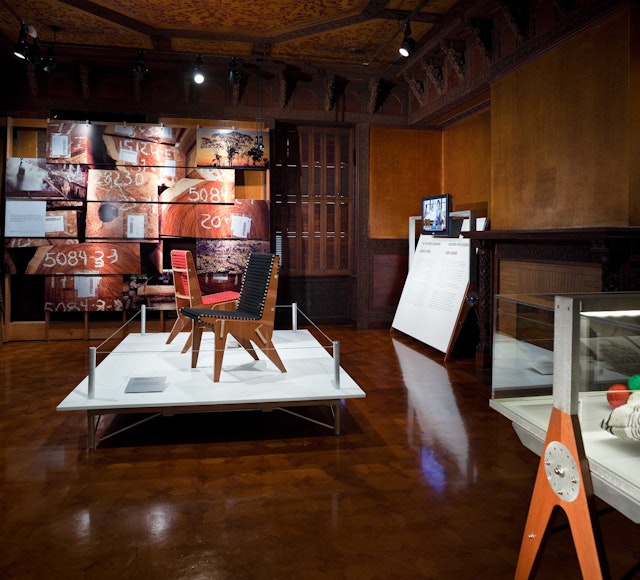
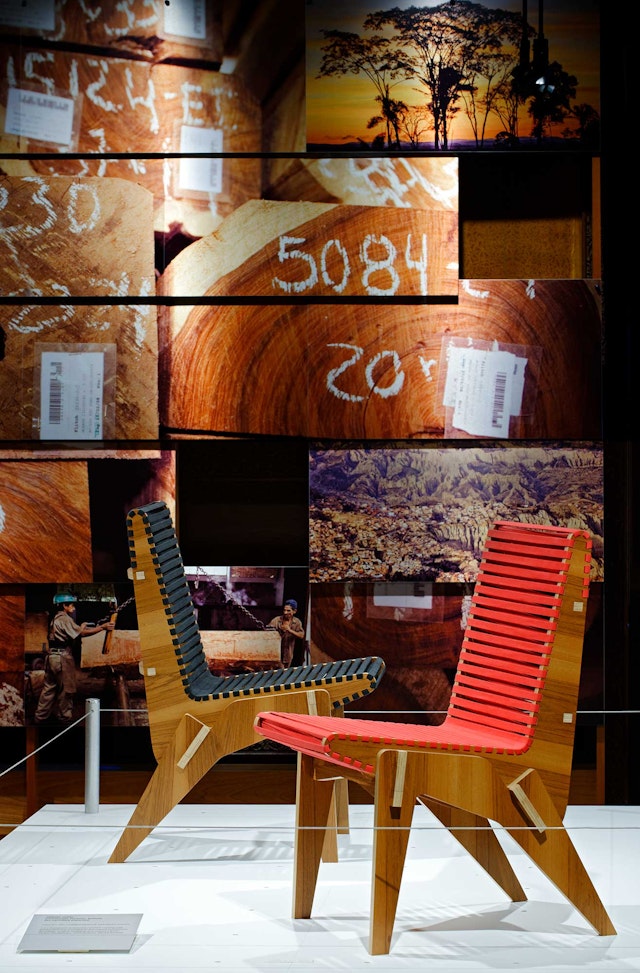

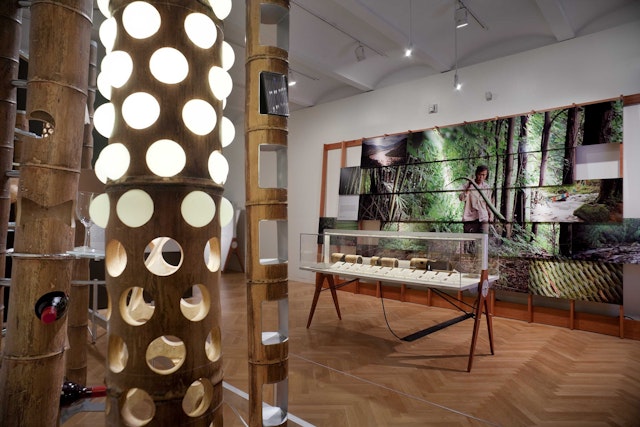
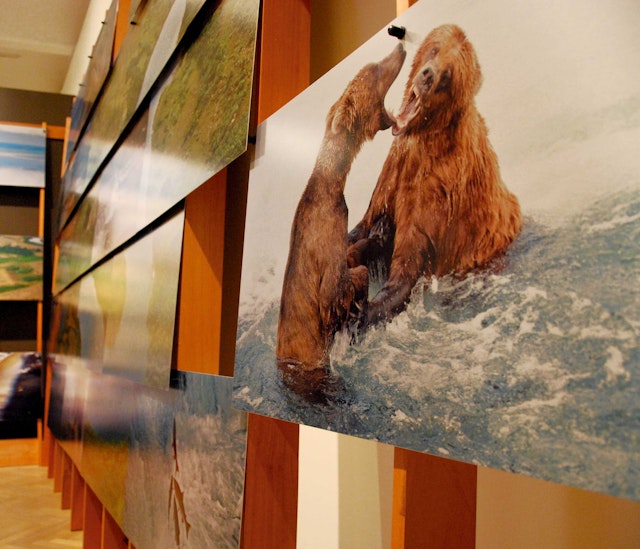
Pentagram's exhibition design documents the participating designers’ creative process and explorations as much as it promotes the results, capturing the sense of discovery—what is it like to work with a material you've never used before—and the generation of ideas for developing a useful object.
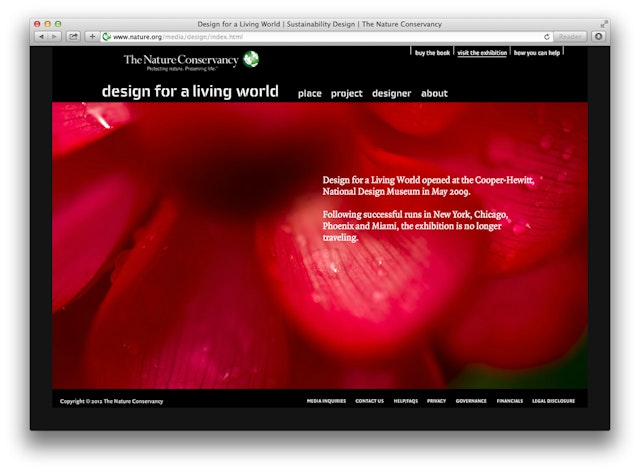

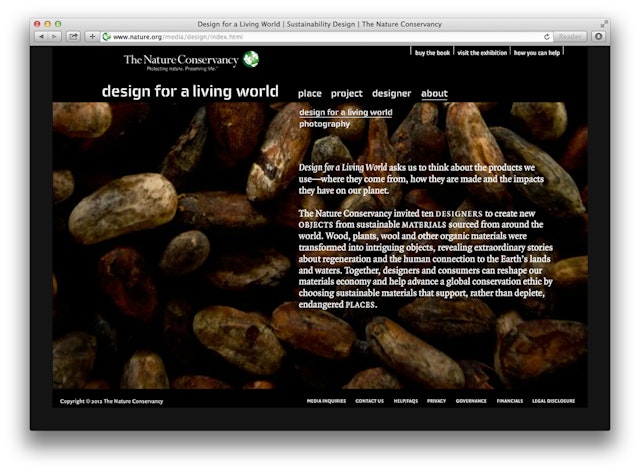

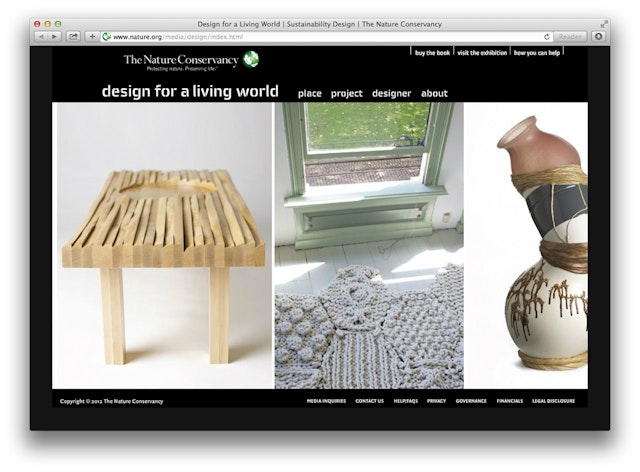

In May of 2009, National Design Museum celebrated the opening of its new exhibition Design for a Living World. Initiated and supported by The Nature Conservancy and co-curated by Abbott Miller and Ellen Lupton, the exhibition commissioned 10 designers from the fields of fashion, product and industrial design to each work with a sustainably grown and harvested material from an endangered eco-system where the Conservancy works. The participating designers include Yves Béhar, Stephen Burks, Hella Jongerius, Maya Lin, Christien Meindertsma, Isaac Mizrahi, Ted Muehling, Paulina Reyes from Kate Spade, Ezri Tarazi and Miller himself. Many of the designers were on hand for the opening galas, sharing news of their travels and projects firsthand with guests.
Pentagram's exhibition design documents the participating designers’ creative process and explorations as much as it promotes the results, capturing the sense of discovery—what is it like to work with a material you've never used before—and the generation of ideas for developing a useful object. The exhibition presents this in an engaging and accessible way that promotes the idea that designers and consumers can actively participate in the advancement of a global conservation ethic.
Design for a Living World is organized as a series of case studies about each designer, his or her assigned material and the environment where the material is sourced. Many of the designers traveled to remote locations, and some of them received materials in their studios.
The exhibition has been installed in the series of galleries on Cooper-Hewitt’s second floor. These galleries open off a central hall where the designers have placed a map of the world that introduces the featured materials and locations. Each gallery is devoted to one or two projects, and the exhibition is perfectly scaled to the rooms of the Carnegie Mansion, with objects displayed on platforms or in vitrines.
The approach to the exhibition is a demonstration of sustainable production and materials. The cases are constructed of FSC-certified plywood from Bolivia and build upon the forms of the chair Miller and Brian Raby designed for the exhibition. The vitrines play on the typology of a museum case merged with a drafting table or an easel. The exhibition is planned to travel following its engagement at Cooper-Hewitt and the fixtures have been designed as a nomadic and modular scheme.
In every gallery, a sense of place is established through the photographs of Ami Vitale, an award-winning photojournalist commissioned to journey around the world to document all ten sites. Vitale's images have been printed on aluminum panels and hung from pegs to create layered montages of images. These are complimented with videos that show process and interviews with the designers.
The use of sustainable materials is integrated throughout the exhibition. The wall structures and the legs of the cases are made of FSC-certified “Spanish Cedar” harvested from Bolivia. The decks of the cases are made of Medite II, a medium-density fiberboard manufactured from 100 percent recycled or recovered wood fibers that are bonded with formaldehyde-free resin.
The exhibition photographs and graphics have been printed on the recycled aluminum panels using a process called direct-to-substrate dye-sublimation printing: the ink is heated and transferred to the material, so it is embedded into the surface of the metal panels and does not scratch off easily. By printing directly to a rigid surface, the use of a paper- or vinyl substrate is avoided, and the process is almost flawless, meaning there are no rejected imperfect panels as there would be when mounting and trimming traditional output.
Pentagram also designed the exhibition catalogue and website and designed one of its featured projects, a chair made of FSC-certified plywood that inspired the approach to the exhibition design and casework.
Office
- New York
